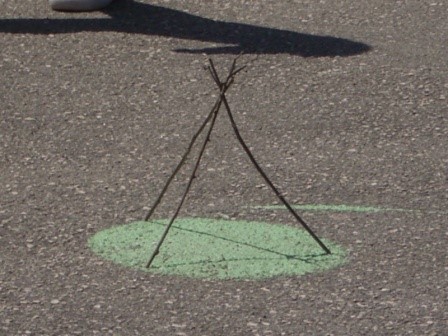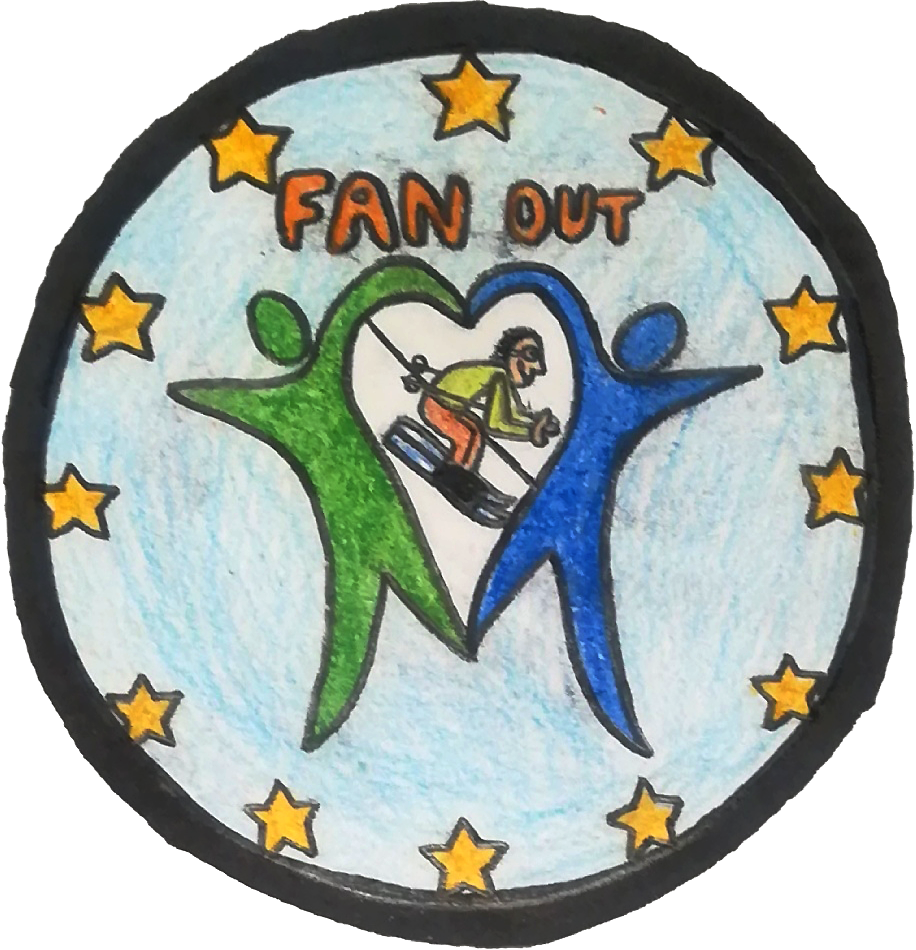SERPINS BETO GAME

MAUL / STICK GAMES

GAME

ALL

TEAMS
NO CLUB

PHYSICAL CONDITION IMPROVEMENT, PHYSICAL MOTOR SKILLS IMPROVEMENT SOCIALIZATION AND INTEGRATION
Serpins Beto Game
How is it played? (Rules)
The game consists of four players divided into two teams of two elements, one team consisting of two defenders and the other by two attackers.
Defenders guard the houses while the attackers throw the «Bolacha» / «Rodela» or the rag ball toward the forks with the goal of knocking it down.
The first step to starting a game would be the decision of who would start defending.
When the teams are defined, the attackers, those who throw the «Bolacha» / «Rodela» or the rag ball, stand behind the houses, one on each side, while the defenders stand with their sticks in front of the houses, also one on each side.
The game begins with the launch of «Bolachas» / «Rodelas» or rag ball, aimed at knocking down the «fork» of the opposite house.
Another objective of the game was to obtain the highest result by changing the position from one house to another, scoring one / two points for each «exchange», being the only point scorers those currently in the task of defenders.
Serpins Beto Game “ First Sketch of the Rules
1. Objectives
1.1 Dismantle the “house†or the “Forcalha†placed inside the “house†when throwing the cork wheel (“bolachaâ€)
1.2 Score through the exchange of houses by the defenders, when the attackers get the cork wheel back.
2. Game Materials
2.1 The Materials of Beto Game are two large sticks (bats), two pairs of “forcalhas†and a cork wheel
2.2 The size of the bats varies depending on the age and characteristics of the players.
2.3 A pine or a cloth ball can be used instead of the cork wheel if there isn´t any.
3. Game Field
3.1 The field of the game must be a “large, plain and free of obstacles free space.
3.2 The distance between the houses should vary between 15 and 20 meters, depending on the age and characteristics of the players.
4. The Players
4.1 The players are divided in two pairs: two are the defenders, two are the attackers.
5. The players functions
5.1 Attack the houses throwing the cork wheels of similar object.
5.2 Defend the houses hitting the cork wheel.
5.2.1 Exchange house, as often as possible after the hitting of the cork wheel, in order to score.
& The defenders should hit the circles of the houses continuously with the bat in order to defend the house when the attacker gets the cork wheel back.
6. The Exchange between the player function
6.1 The attackers, or throwers, exchange function when the house is dismantled.
6.2 The defenders, or hitters, exchange function when the attackers, or throwers, dismantle the house.
& The exchange of functions can be conditioned by other factors, if previously agreed by the players.
7. The players placement
7.1 The attackers, or throwers, must place themselves behind and sideways with the houses.
7.2 The defenders, or hitters, must place themselves in front and sideways with the houses.
8. The handling, throwing and hits
8.1 The bat or stick can be wielded with one or two hands, whatever the player decides.
8.2 The attacker, or thrower, must throw the wheel low and making it touch the ground at least once.
8.3 Both attackers can recover the cork wheel after the defenders hit it back.
8.4 The attacker can throw the cork wheel against the houses when the defender isn´t hitting the circle around the house with his bat.
8.5 The attacker, after the defenders hit the cork wheel back, can, if the said defender isn´t hitting the circle around the house with his bat, throw the cork wheel again against the houses.
8.6 The defender, or hitter, can hit the cork wheel back in all directions.
9. Ponctuation
9.1 During a game, only the defenders can score.
9.2 The defending team can only score through the exchange of houses, as many times as they can, after the hit on the cork wheel.
9.3 The scoring can only be validated if the defender hit both his house and the attackers house, being given one point for each time he does that.
10. The Start and the End of the game
10.1 Before the game starts the teams are chosen through a game known as “Tirar-Sortesâ€, staying the winners as the defenders.
10.2 The start of the game is when the attacker first throws the cork wheel.
10.3 Each game is point-limited, being this limit left to the players consideration.
10.4 The point-limit is, usually between 24 and 30 points.
& The players can choose other point-limit, taking in consideration factors as the players age and characteristics, as well as the time available to play.
Sport or Game History and origins:
The analysis of literature shows that several traditional games have no data on the way of life of its time nor any information on the possible predecessors of the traditional games played nowadays. From the same analysis, we also concluded that we can’t establish an accurate age of the Beto’s Game played in Serpins, but only one estimated age. However, the elements we retrieved during the research on the social representations and on the game itself, allow us to consider that this game, the one played in Lousã’s District, is, at least, one century old , as the players, with ages between 55 and 73 years old, said that the game “had been taught to them by the elders, over the timesâ€. Curiously, the majority of the players said that they didn’t know any game similar to the one they played, nor they knew about the existence of the British cricket.
In conclusion we know this game by the oral tradition, this game as an adolescent and adult men game played in threshing-floor or on the large field, on Sundays afternoon in community of Cova do Barro, Vale de Madeiros, at village of Serpins.
Submitted by
COIMBRA UNIVERSITY
Objective
The sole objective is the confrontation between two teams and their defensive and offensive abilities, trying to invert positions and thus achieve a preset score that would dictate the end of the game and subsequent victory of the team that got to that score, regularly set between 24 and 30 points.
Benefits
Physical: Physical condition improvement (strength, speed, endurance, etc)
Physical: Motor skills improvement (coordination, balance, agility, etc.)
Social: Socialization (social relations based on game/sport).
Social: Integration (intergenerational, integender, intercomunities, etc.)
Game’s materials
Materials
Designation Size
Two big wooden sticks 50 to 70 cm long
Two set of forks “Forcalhas†25 to 30 cm long
One cork well “Bolachasâ€/â€Rodelas†10 to 20 cm wide
or one rag ball
Is it related to an specific event or festivity ( festivals, religious or pagan celebrations)?
No.
Graphic material:








